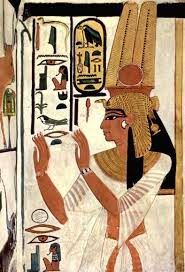 The Treasury of Greek Mythology by Donna Jo Napoli and illustrated by Christina Balit is a brightly colored and beautifully illustrated collection of the stories of the gods and goddesses of Greek mythology. Highlighting some of the most popular gods and goddesses, Napoli does a masterful job of retelling these myths with vocabulary and writing style that is both appropriate and interesting to young readers. I even found myself giggling a couple times. Napoli uses hip and childish phrases to help young people relate to the sometimes uncomfortable and provocative tales of Greek mythology.
The Treasury of Greek Mythology by Donna Jo Napoli and illustrated by Christina Balit is a brightly colored and beautifully illustrated collection of the stories of the gods and goddesses of Greek mythology. Highlighting some of the most popular gods and goddesses, Napoli does a masterful job of retelling these myths with vocabulary and writing style that is both appropriate and interesting to young readers. I even found myself giggling a couple times. Napoli uses hip and childish phrases to help young people relate to the sometimes uncomfortable and provocative tales of Greek mythology.I have studied Greek mythology in the past but had forgotten some of the tales and some were even new to me. Being an adult, I had lost awareness in regards to the cheeky nature of most of the stories. With gods and goddesses eating, drinking, and killing one another, this can be disturbing to children if not approached in the right way. However, Napoli does this successfully and as lightheartedly as possible.
My favorite goddess is Hera the goddess of marriage. I always find her tale to be both empowering and humorous. Though quiet and demur, she possesses the ultimate power to become Queen with Zeus and ultimately be an extremely powerful goddess in the world of Greek Mythology.
 Balit's illustrations are absolutely stunning. Each god and goddess is depicted beautifully with vibrant colors and things that are special to their story. For example, Hera is shown with a peacock and Gaia, mother earth, is shown with the sun, trees, and other aspects of nature (shown below). The book also contains a map of Greece today, a time line, a list of the gods and goddesses in the book with basic facts, an index, and table of contents.
Balit's illustrations are absolutely stunning. Each god and goddess is depicted beautifully with vibrant colors and things that are special to their story. For example, Hera is shown with a peacock and Gaia, mother earth, is shown with the sun, trees, and other aspects of nature (shown below). The book also contains a map of Greece today, a time line, a list of the gods and goddesses in the book with basic facts, an index, and table of contents.I love this collection of Greek mythology because it is age appropriate while still displaying the truth in these legends. The illustrations are so beautiful that even without the great text, I would still want to have this book to show children the beauty that lies within the history of Greece. I am so happy to now own this collection so that I can share it with my children one day.
Motivational activities:
*Have students choose a god or goddess out of Treasury of Greek Mythology and write a two page report on their choice. Have them include the origin of the god or goddess, what they are best known for, and which god and/or goddesses they are closely related to.
*For fun, watch Disney's Hercules. Afterwards, have children discuss the bits of Greek mythology they noticed in the movie.
Reader response questions:
1. Who is the goddess of earth?
2. Pick a god or goddess and explain their place in the greek mythological tree.
3. Who was Poseidon and whom did he fall in love with deeply and why?
Further reading:
*Greek Myths for Young Children by Heather Amery
*Atticus the Storyteller's 100 Greek Myths by Lucy Coats
*The D'Aulaires' Book of Greek Myths by Ingri D'Aulaire and Edgar Parin
*The Ancient Greek World by Tracy Barrett and Jennifer T. Roberts
*Black Ships Before Troy: The Story of the Illiad by Rosemary Sutcliff
*The Wanderings of Odysseus: The Story of The Odyssey by Rosemary Sutcliff





























_06.jpg)

